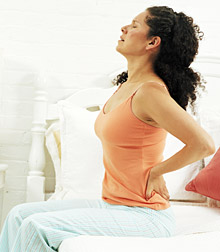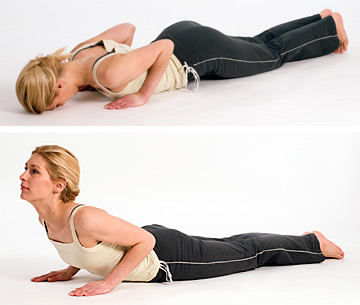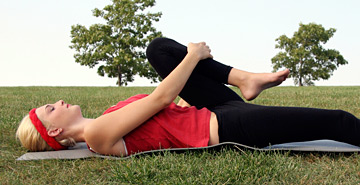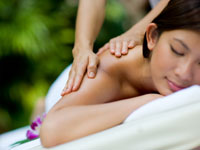I am often asked, "What
is reflexology?" and that is sometimes followed up with, "Is it just a foot massage?"
The Reflexology Association of Canada defines reflexology as: A natural healing art based on the principle that there are reflexes in the feet, hands and ears and their referral areas within zone related areas, which correspond to every part, gland and organ of the body. Through application of pressure on these reflexes without the use of tools, crèmes or lotions, the feet being the primary area of application, reflexology relieves tension, improves circulation and helps promote the natural function of the related areas of the body. (From
"Standards of Practice, Code of Ethics & Code of Conduct." Click to view the document.)
Reflexology seems to be a mystery to most people. My answer to their questions is that reflexology is the belief that the feet (and for some practitioners the hands and ears) mirror the body and that by working the feet, you are, in effect, working the entire body. Reflexologists believe every part of the body from the organs and glands to the spine to the sinuses has a reflex point on the feet and that you can effect these by applying deep pressure to those points. I always say that reflexology is a great modality for anyone who wants to try bodywork but is uncomfortable receiving massage as reflexology is done fully clothed with only your feet exposed and touched.
A brief history
Many civilizations worked on the feet to promote health. It is widely believed that reflexology originated in China about 5000 years ago, but there is evidence that it was also practiced in some form by Egyptians, Russians, Japanese, and Indians. The Cherokee nation of North America practices a form to this day that is passed down to each new generation.
The precursor of modern reflexology was introduced to the United States in 1913 by William H. Fitzgerald, M.D. (1872–1942), an ear, nose, and throat specialist, and his colleague, Dr. Edwin Bowers. Fitzgerald argued that parts of the body correspond to others and that applying pressure in one area had an anesthetic effect on other areas and called it "zone therapy". Bowers would demonstrate this theory by first applying pressure to the point in a person's hand that corresponded with a specific area of the face. Then, he would stick a pin into the same area of that person's actual face without that person feeling any pain.
Reflexology was further developed in the 1930s and 1940s by Eunice D. Ingham (1889–1974), a nurse and physical therapist who used zone therapy on her patients. She concluded that since zones ran throughout the body and could be accessed anywhere, some areas might be more effective than others. Ingham believed that the feet and hands were especially sensitive, and mapped the entire body into "reflexes" on the feet. It was at this time that "zone therapy" was renamed reflexology.
A mirror of the body
Below is a foot reflexology map from the book
Feet First: A Guide to Foot Reflexology by Laura Norman. I like Norman's book because the language is simple. Anyone can pick it up and grasp the concept of reflexology and how to give a reflexology treatment, not just bodyworkers or those with a deeper knowledge of anatomy. I also think her maps are clearer than others and more logically laid out, making them easier to remember and follow. (I've found that not all reflexology maps are the same. Some chart the points in very different places. More on that to follow.)
See how all of the organs are arranged just as they are in your body? The brain is on the top of the toes, just like it's at the top or your head. The heart is in between the lungs and more left than right. The liver is on the right, the stomach on the left and they are below the diaphragm and above the intestines. There is one kidney on each side, etc.
Click here for an interactive map.
The reflex points aren't just on the plantar surface, either. There are points on both medial (inner) and lateral (outer) arches, around the ankles and on the dorsal (top) surface. For example, the medial arch is considered "the spine" of the foot because its curvature mimics that of the spine.
Unlike massage, reflexology is not a manipulation of the soft tissue. Rather, the thumbs and fingers are use to apply static pressure. The practitioner may manipulate the foot to flex, rotate, or pivot it onto the thumb or a finger for deeper pressure. When the practitioner finds an area that is tender, they might work that reflex more by taking their thumb and applying pressure all around that area, and from several different directions and angles to be as accurate and effective as possible. It usually takes several sessions for recipients to notice any difference in how they feel if they have a chronic condition. Relaxation and serenity, though, can be achieved immediately.
Also, tender areas do not always mean that something is wrong in the body. Just because someone has a tender heart reflex does not mean they have a heart defect. A tender area could be a foot problem, too, such as a bunion, bruise or scar tissue. Only doctors can diagnose. Reflexologists should only ever tell their clients what they are feeling in their feet, and it is up to the client to seek further attention from a physician. In Norman's book, I think she does a good job of explaining what reflexology is and isn't:
In plain language, it is not a foot massage and it not a medical treatment. First and foremost, reflexologists do no diagnose illness, nor do they practice medicine ... Neither does a reflexologist treat specific diseases. Even though most of my clients tell me what their problems are ... we never proceed as if a reflexology session is going to cure these problems. We spend extra time working the reflex area on the foot that corresponds to the body part that is troubled, but our work cannot be classified as medical treat as such ... reflexology works with subtle energy flows, revitalizing the body so that the natural internal healing mechanisms of the body can do their own work. As a matter of fact, people do attest to better health, even sometimes a marked reduction or even disappearance of the ailment. But it was not the reflexologist nor the session that cured. Only the body cures ... When practiced in conjunction with sound medical advice form your physician, reflexology facilitates healing.
She also encourages her clients to inform their physicians that they are receiving reflexology treatments because a relaxed body functions better. She mentions that she has had diabetic clients who, in consultations with their doctors, where able to reduce their insulin.
So, does it really work?
Reflexology, like any complimentary or alternative practice (CAM), has its detractors. Most doctors think it's New Age Quackary. They don't think any substantial evidence exists that proves efficacy. And, to be honest, it's hard to say, "Oh yes, this works" when different reflexologists or reflexology associations practice different methods and follow different foot or hand maps. Also, reflexology isn't regulated by a governing body. For massage therapy, almost every state has a different board that licenses, registers, or certifies practitioners. I am licensed by the state of Maryland. I cannot practice massage for pay without it. However, if I wanted to practice reflexology and only reflexology, I don't need any such credential.
But, a
recent study at the Florence Nightingale School of Nursing and Midwifery, in London, England, set out to determine the effectiveness of reflexology in treating idiopathic constipation in 19 women. The result was 94% believing that their constipation was improved. Regis Philbin tells how Laura Norman
saved him from having surgery to remove a kidney stone and helped him relieve a goiter.
And there are boards that provide certification, such as the
American Reflexology Certification Board. The ARCB serves to educate the public and provide professional and ethical standards for practitioners. A reflexologist who is certified by the ARCB took an exam to prove their knowledge of the theory and practice of reflexology, lending credibility to what they do.
My answer to the question is that different things works for different people. I believe in massage and chiropractic because they have worked for me personally, but I don't think
ear candling works. And I don't think traditional Western medicine always works, either. Medications are constantly discontinued because in the end they do more harm than good. Surgeons have a reputation of always ever recommending surgery, because that's what they do. I think that massage therapists, reflexologists, internists, surgeons, chiropractors and other health related professionals are the same as all other professional fields: some are great at what they do, and some just aren't. If you go to someone who isn't in it because they love it, then your experience will be negative.
If you really want to know if an alternative therapy works, you should try it. Maybe it will. Maybe it won't. They key is to go at it with an impartial mind. If you really, really, really want that reflexology session you are about to receive to clear your sinuses forever, you will convince yourself that it does. If you really, absolutely, no-doubt-about-it believe that the tincture your herbalist made up for you isn't going to do you a lick of good, then it will seem to you that it doesn't. And the same applies to traditional medicine: If you don't think you're going to feel better if you take this or that drug, you probably won't.
The human body is a mystery, and every one responds differently to the outside environment or stimulus. The only way to know what your body likes is through experience. So don't be shy. Put those feet forward and say, "Okay, I'm game!" If anything, your feet will feel great and you'll have a serene, blissful nap.












